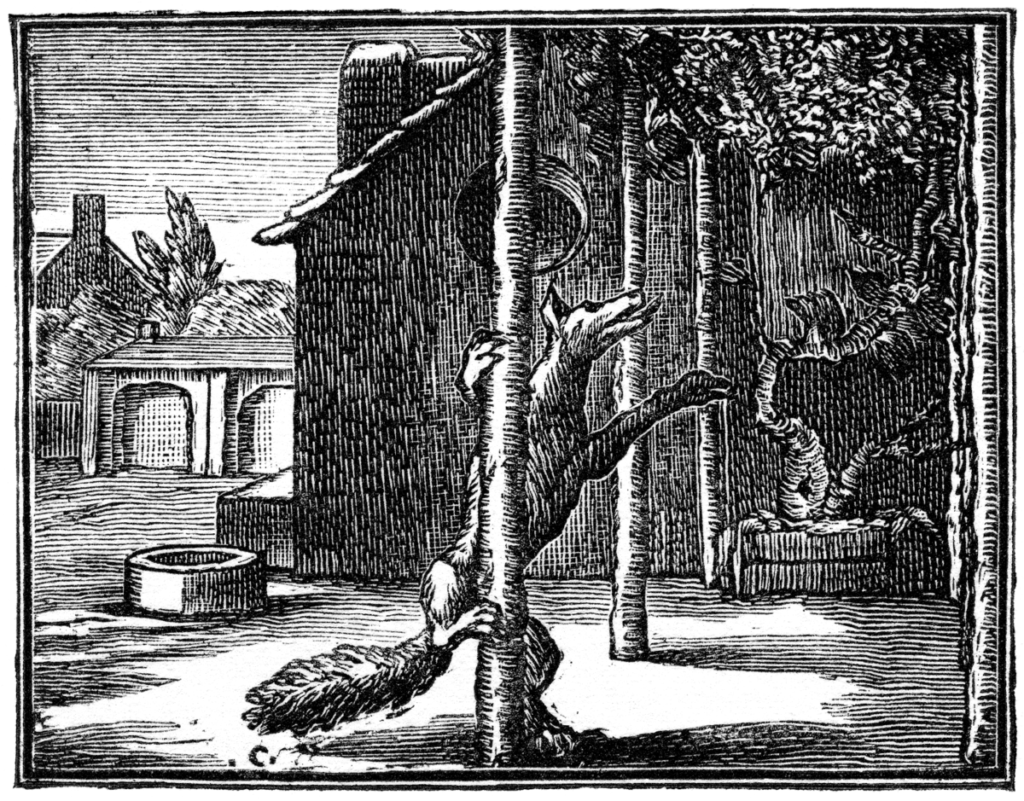The Fox and the grape

1. genre
original: fable
change: Japanese mythology
2. cultural influence
original: Medieval Europe
change: Japan
3. mood
original: Dark
change: Colorful
4. setting
original: behind building or near a manmade structure
change: forest
5. update characters
original: skinny/not fluffy
change: fluffy
Summary
Aesop was the storyteller of this fable “The fox and the grapes” This and many of his tales were passed down for centuries. An adaptation I’ve found in the school library site is “Aesop’s Fables by Aesop. However, “La Fontaine’s fables” by Francois Chauveau is the oldest book illustration I can find of this fable, so I’ll be refencing to that illustration.
I was unsure how exactly how I can put my spin on the illustration. The story is still has modern imagery today so I want to stare away from a children saturated style. While researching, I’ve learned that the Aesop’s fables had spread through different cultures in Europe and Asia. It came to me to probably try out using a ink brush style from Japan.
The story is a few sentences long. It is about a fox coming across grapes hanging from a tree. In Chauveau’s version takes place near man-made structures. The fox tries multiple of time to get it but eventually gives up. Finally, the fox says the line “I thought those Grapes were ripe, but I see now they are quite sour.” The fox is usually depicted as being smart and sly but in here he meets defeat, showing impatience. I think the audience for “Aesop’s Fables” are children, but I think these stories can still hold value for adults since fables are more philosophical.
Here is a link of an adaptation of the story
https://ebookcentral.proquest.com/lib/citytech-ebooks/detail.action?docID=1805590&query=Aesop%27s+fables




Leave a Reply